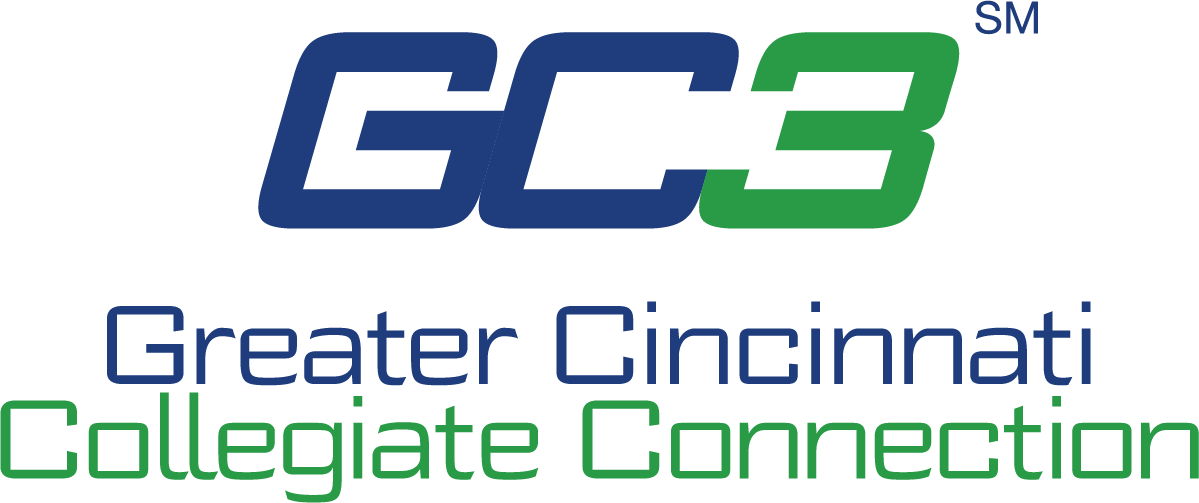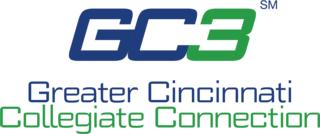
Dr. Monica Posey, President of Cincinnati State Technical and Community College and Dr. H. James Williams, President of Mount St. Joseph University
Collaboration has been the heart and soul of the Greater Cincinnati Collegiate Connection (GC3) mission. Since 1974 when GC3, then known as the Greater Cincinnati Consortium of Colleges and Universities, was established by 10 founding member institutions, inter-institutional cooperation was top priority.
Today, more than 40 years later, GC3 is an alliance of 18 regionally accredited, nonprofit colleges and universities advocating for higher education by using the collective strength of its institutional members to positively influence the value of higher learning in Greater Cincinnati. GC3 not only promotes professional development and opportunities for collaborative learning to advance the effectiveness of all members, but also advances the regional economy, culture and overall quality of life for everyone in the area.
“The GC3 does provide a really nice forum, a really nice setting to be able to come together and benefit the community, benefit our students and benefit our peers in higher ed,” says Zachary Silka, Vice President of University Communications at Mount St. Joseph University.
One collaborative program is Cross-Registration, which was created to allow students access to academic opportunities not available at their own institutions. Each GC3 member has its own eligibility requirements that students must meet to enroll in the program and to earn credit, but all GC3 institutions work together to fulfill any student needs to help them achieve academic success.
While Cross-Registration is a GC3-wide program, there is a multitude of collaborative programs available that are tailored to specific GC3 members.
The Connections Scholars program at Mount St. Joseph University is one such cooperative effort. It is designed to make it easier for students who complete associate degrees at GC3 partner institutions Cincinnati State Technical and Community College or Gateway Community and Technical College to seamlessly apply their credit hours toward a bachelor’s degree at the Mount. The new program, which was established this summer at Cincinnati State and is currently being rolled out at Gateway, builds on articulation agreements already in place to increase affordability and completion for the transfer student.
After completion of their initial semester, students can enroll in Connections Scholars and are eligible for a MSJU ID, which provides access to the university library and sporting events. They are also afforded enhanced academic transfer advising on-site at Cincinnati State and Gateway, a tailored orientation program and priority registration at the Mount, application fee waivers and streamlined acceptance of transfer credits, according to Silka.
Maggie Davis, Associate Provost for Academic Support at Mount St. Joseph University and a major force behind the Connections Scholars program, says more program options will allow most any Cincinnati State student to complete their bachelor’s degree at the Mount. The university will also offer some classes on the Cincinnati State campus for education majors.
“But we also have certain pathways that are very specific to certain majors,” says Davis. “For example, if you’re a nursing major or a business major or a health and wellness major, there’s a certain prescription that we have, almost of what to do and what to take and what to come over and get the most out of your degree at the Mount.”
Students can earn up to $10,000 per year in special transfer scholarships toward their education at the Mount, which may be combined with other merit-based and need-based scholarships.
The Mount also has a 3 +3 accelerated law program with GC3 partner Northern Kentucky University Chase College of Law where a student can complete their schooling in six years rather than the typical seven. In addition to completing their undergraduate and law degrees a year earlier and saving a year of tuition, qualifying students might also be eligible for additional scholarships offered by NKU and Chase.
A similar partnership with Miami University offers a 3 + 2 accelerated program in chemical engineering. The program allows chemistry majors to earn their master’s degree in five years, saving students both time and money.
Similarly, the University of Cincinnati and Cincinnati State have a partnership called Cincinnati Pathways, which assists students who complete an associate degree from Cincinnati State to transfer to UC for completion of a bachelor’s degree.
Donnie McGovern, Director of UC Center for Pathways and Advising and Student Success, says his office, established just over a year ago, was the result of a concerted effort to invest in the transfer population, which makes up 42 percent of UC graduates.
“Part of the partnership with UC is to help us both be partners in getting the students a clear path as soon as possible so there are no surprises, so there are no hiccups along the way,” McGovern says. “We can help eliminate any barriers.”
With four full-time advisers who offer walk-in or appointment assistance to Cincinnati State students, plus UC advisers on the Cincinnati State campus, the process is simplified and easier to navigate.
“There are lots and lots of students out there who have their eyes on bachelor degrees, but if they start immediately in their senior institution they’re going to be put in some really difficult debt positions in a lot of cases,” says Geoff Woolf, Cincinnati State Dean of Humanities and Sciences. “With these articulation and transfer agreements, what you’ll find is students can get a really well-focused first two years of their four-year degree and save a ton of money.”
Students who meet requirements are guaranteed admission to UC upon degree completion. Students are also eligible for a Cincinnati Pathways Scholarship.
“It does help provide equal opportunity for all citizens of our community to achieve higher education,” says McGovern, whose background is in community college. “I see it, and my team sees it, as our moral obligation to the city of Cincinnati to ensure that we have these streamlined articulated pathways.”
Additionally, Cincinnati State has an Honors Program and an articulation agreement with Mount St. Joseph University and UC where qualifying students can automatically enter the Honors Programs at either partner institution.
“That often creates possibilities for other scholarships and other learning opportunities that non-honor students don’t normally have access to,” Woolf says. “They’re designed to give students, who would otherwise qualify for highly selective colleges and universities but for whatever reason aren’t there, to get that highly selective experience, and we do a great job of that at Cincinnati State.”
According to Janet Piccirillo, Executive Director of GC3, these programs are a sample of the collaborative academic efforts amongst member colleges and universities.
“What makes GC3 unique is the ability and willingness of public and private institutions, in different states, to work together for the benefit of the region,” Piccirillo says. “GC3 colleges and universities do not view collaboration as a paradigm shift. For them, it has been a way of operating for more than 40 years.”

